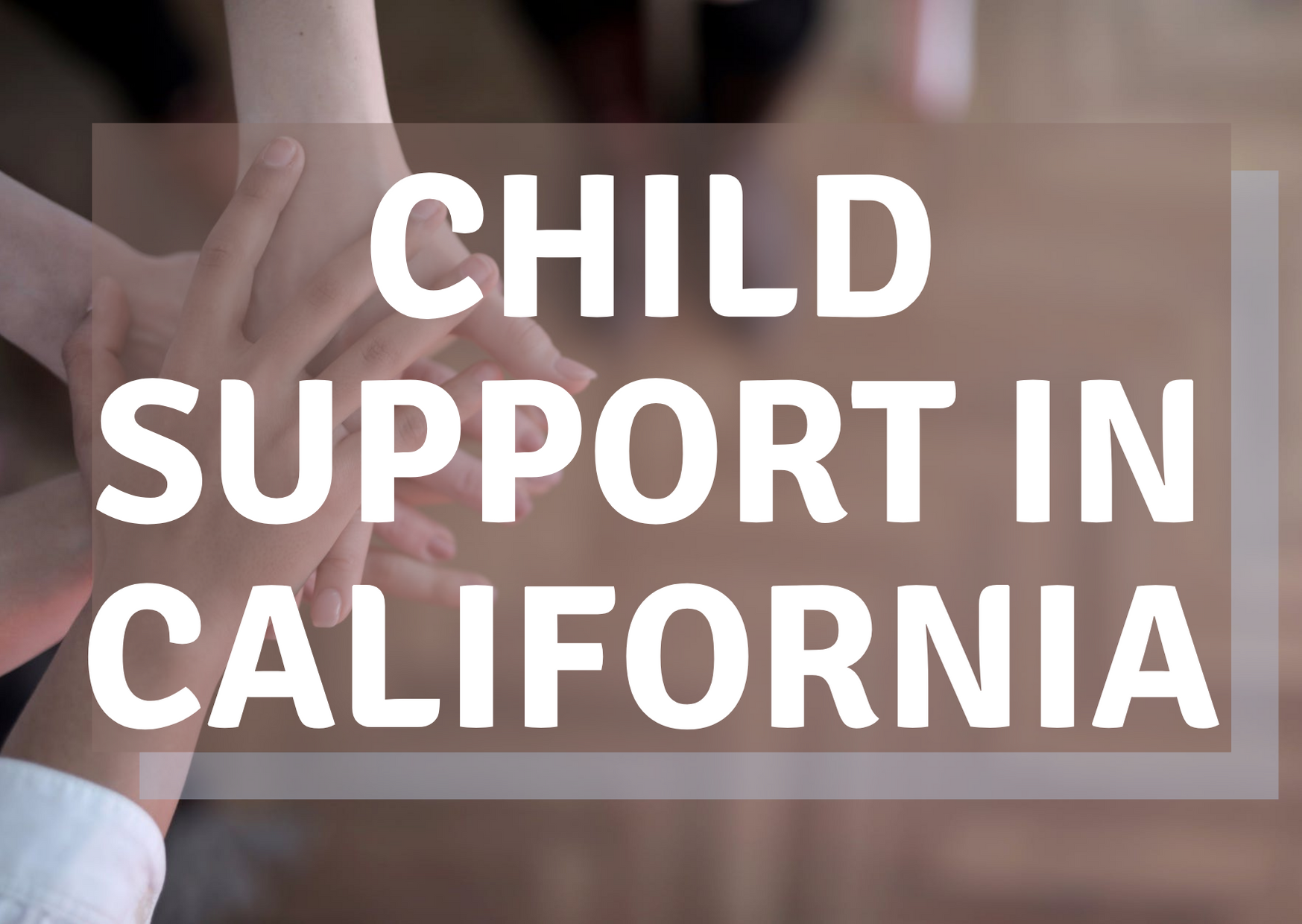Child Support in California
Learn how to calculate child support in California and how payments can be modified or terminated.

Understanding Child Support in California
Child support is a monthly payment a parent pays another to help pay for the costs of child support after a separation or divorce. In general, parents who take care of children most of the time (called “custodial parents”) tend to receive child support. This is because the law assumes that the custodial parent has paid the child directly. Parents with less parenting time (called “noncustodial parents”) usually make payments, but a court can order both parents to pay child support.
Usually, parents must pay child support until the child’s 18th birthday. However, there are some exceptions. Support can continue until the child is 19 years old if the child is still in high school and lives with the parents.
The support period may be shorter if the child marries or applies for a domestic partnership, joins the military, or becomes self-sufficient. On the other hand, a parent can agree to support a child for a longer period of time or, if the child cannot be self-sufficient because of a disability, the court may order continued support.
California Child Support Guidelines
The amount of payment depends on California’s child support guidelines. California’s principles are based on a mathematical formula that includes a number of factors explained below. The formula itself isn’t rocket science, but the details seem intimidating. You can estimate the amount of child support your child may have to pay – or how much your child could receive – using the California Rules Calculator.
Although the court thinks the number the instructions give is the appropriate amount of child support, sometimes the results can be unfair. This tends to happen in special cases when the parents have different parenting time sharing arrangements for different children (that is, the older child lives with Parent A 80% while the younger child lives with Parent B 80% of the time); or where the parents have essentially equal time share, but either parent has a much lower or higher percentage of income used for housing; or where the child has special medical needs. In cases like these, among others, the court may ask for a higher or lower amount.
Parents may also agree to pay more and in limited circumstances agree to pay less. In all cases, the court must approve the final amount. The court will only approve a parent’s agreement for guided support if the parents declare that they are fully aware of their rights regarding support and are not forced into the agreement.
They must also explain that less money is still in the child’s best interests and that the child’s needs will be met. This option is not available for parents who have applied for or received public assistance, such as TANF. Parents receiving public assistance may agree to support payments equal to or greater than the instructional amount. However, the local child support service must agree to that as well.
Estimating Child Support Payments
To get started, you’ll need the net disposable income for both parents. Net disposable income is the difference between gross income and what counts as a child support deduction. Gross income includes everything from salaries and commissions to unemployment, military pensions and social security benefits.
Most other sources of income, even lottery winnings and spousal support (support) received, count as gross income. You can exclude child and spousal support payments actually paid and money from public assistance programs like CalWORKs.
A parent trying to avoid paying child support by refusing to work or working less rarely gets rid of it. This is because the court can “impute” the income, which means the amount the parent must earn based on factors such as employment history, education and training. The state aims to ask a parent to live and die responsibly with the family, not to punish a parent at home with their young children.
Once you’ve determined your gross income, you can withhold state and federal income taxes, mandatory union fees and health insurance premiums, among other things. In addition to your parent’s disposable net income, you also need to know:
- the number of children who need support
- the custody (time-share) arrangement
- the parents’ tax liabilities
- whether a parent supports children from another relationship
- the child’s health insurance expenses
- the parents’ mandatory retirement contributions and other job-related expenses, and
- any other relevant costs.
The costs involved tend to be related to health care, daycare or child care so that the parent (s) can work and travel. The court will order one or both parents to provide health care for the child – including vision and dentistry – and pay for child care needed for employment, education or training created by parents. The court also has the discretion to request additional payment for the child’s education or special needs and parental travel and travel expenses.
After you enter your parental disposable net income and all other factors into the child support calculator, you will know how much support is due. However, this number is only an estimate until you have a court order.
If you find the process overwhelming, you are not alone. Many family courts in California have a family law facilitator who can provide some level of assistance with family law matters, including child support calculations. However, you must provide accurate financial information and be prepared for limited office hours.
Alternatively, you can ask your local office of child support services for help opening up a child support case on your child’s behalf, locating a parent, obtaining a court order for child support, and enforcing a child support order.
Collecting Child Support
After the judge makes a child support order, the obligor or the paying parent must provide child support as specified in the order. Parents can pay child support through direct deposit, cash, check or even Venmo.
If your ex refuses to pay child support on time or on a judge’s order, you can ask the court to enforce the order and requires support payments to be taken directly from the parents’ wages. Contact the Child Support Services Department of the Attorney General’s Office for forms and more information.
Modifying the Amount of Child Support
Once a child support order is made, it doesn’t have to be in place. If the child support order is less than the instructional amount, the parent can ask for a change (called a modification) at any time.
If the order is equal to or higher than the instructions, either parent can still request a child support adjustment, but there must be a significant change in financial circumstances or time sharing time.
Some common reasons for modifying a grant are when parents voluntarily lose their job, earn less or more, or have a change in the sharing of guardianship. Other good reasons to change a child support order are when a parent has a child that is different from another partner or when the parent is in prison.
Remember that a parent who has lost a job or a new baby may not be the only change that affects the amount of support. When parents ask the court to amend the child support order, the court must consider the financial situation of both the parent and how much time it is currently shared with the child.
This could mean that even as a parent’s income falls, the parent’s child support payment goes up. How is that possible? It could be due to time sharing. For example, support payments tend to increase as the parent time share percentage decreases. The time share percentage will need to be recalculated (if in fact, it has changed) along with any change in earnings and could lead to a surprising result.
The sudden increase can also occur simply because the parent requesting the modification does not know that the other parent also has lost income, or may lose the medical benefits covered by the child. You can read more about enforcing a child support order and learn more about changing a child support order.
Considering Divorce? Talk To A Divorce Attorney.
